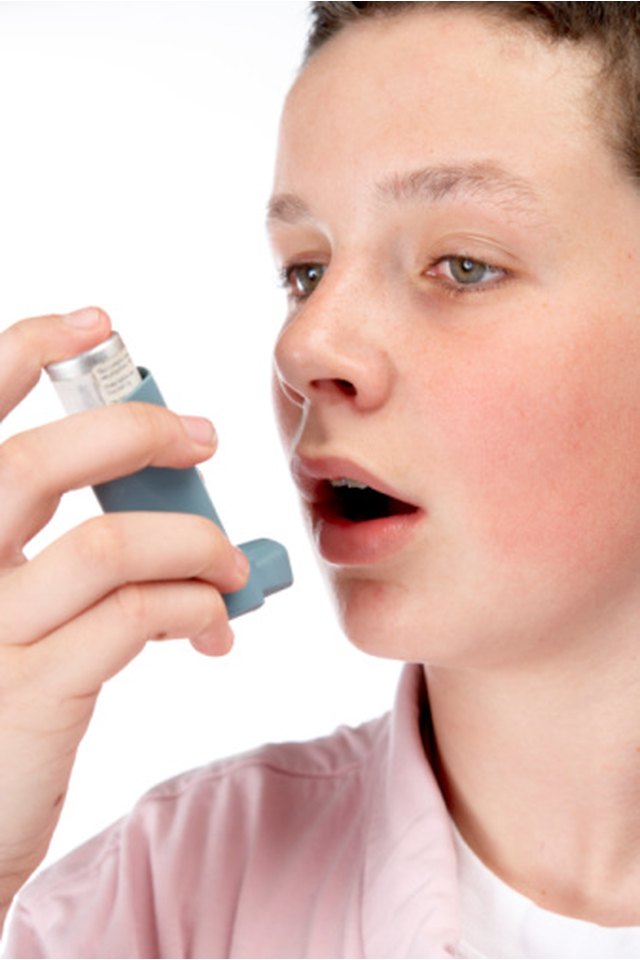How to Open Up Your Airways

When your airway is not fully open, breathing can become difficult. People who suffer from asthma or chronic obstructive pulmonary disease (COPD) often face this problem when inflamed airways narrow during bronchospasms. The smooth muscles contract during an attack, making it more difficult for air to escape. Keeping the airway open helps air enter and exit your lungs more easily, which also helps prevent fatigue. Strengthening the diaphragm through use of a breathing retraining exercise can help keep your airway clear.
Perform a breathing retraining exercise that helps you release more old, stale air from your lungs and bring in more fresh air. Since the diaphragm is a muscle, exercising it helps your airway stay open longer when breathing out.
Sit in a chair or stand with your back and knees slightly bent. Put one hand on your chest and one on your abdomen.
Breathe through you nose as you relax your abdominal muscles. Feel you diaphragm contract and your abdomen expand. Make sure you chest barely moves. This is called diaphragmatic breathing.
Purse your lips together as you exhale like you would if you were whistling This creates pressure on you airways that helps keep them open. Exhale slowly, taking twice as long as you would to inhale. Visualize your lungs opening and closing as you breathe. This technique helps relax and opens your airway.
Tips
Coughing to clear mucous from your lungs can also help open up your airway. Drink a cup of coffee. Caffeine mimics the effect of theophylline, an asthma medication that helps open airways.
References
Writer Bio
Amanda Maddox began writing professionally in 2007. Her work appears on various websites focusing on topics about medical billing, coding, real estate, insurance, accounting and business. Maddox has her insurance and real estate licenses and holds an Associate of Applied Science in accounting and business administration from Wallace State Community College.
